In an ideal world, you’d get most of your nutrition from whole foods. But sometimes, you need a little help. Meal replacement shakes can help fill in dietary gaps and provide a quick source of nutrition when you’re on the go. However, not all meal replacement shakes are nutritionally equivalent, and with so many options, choosing the right one for your health needs can be overwhelming.
That’s where Ka’Chava comes in, offering an all-in-one meal replacement shake made from whole food ingredients and designed to provide balanced nutrition. It provides 26 vitamins and minerals, as well as plant-based protein, adaptogens, and probiotics, all in a convenient powder form.
In this review, our team of nutrition experts breaks down everything you need to know about Ka’Chava’s ingredients, potential benefits, side effects, and how it stacks up against other meal replacement products on the market.
Medical disclaimer: This article is intended for educational and informational purposes only. It is not intended as a substitute for medical advice. For health advice, contact a licensed healthcare provider.
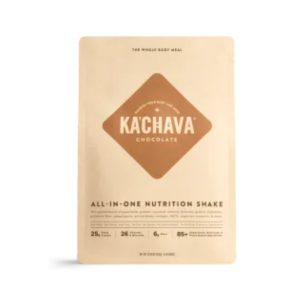

Key product features
What you should know
Ka’Chava claims to be the “world’s healthiest shake,” designed to nourish the body with essential nutrients. And we agree—it’s one of the better options for a nutritious meal replacement.
- Ka’Chava’s unique ingredient list includes maca root, medicinal mushrooms, and sacha inchi—a source of plant-based protein with a nutty flavor. Plus, it offers key vitamins and minerals like B12, D, calcium, and iron, which may be nutrients of concern in vegan diets. (1)
- This shake is an investment at $4.67 per serving, but it’s comparable in price to other quality meal replacement shakes.
- Ka’Chava’s superfood shake may be worth exploring if you’re looking for a vegan meal replacement shake to help bridge nutritional gaps when you’re on the go.
- Ka’Chava recommends mixing two scoops of powder with 12-14 ounces of ice-cold water for best results.
- For people trying to lose weight, replacing a high-calorie meal with Ka’Chava could help create a calorie deficit, which is essential for weight loss. (2) However, if you’re aiming to gain weight, you might need to pair Ka’Chava with calorie-dense foods like nut butter or avocados to increase your overall caloric intake and support weight gain.
Ka’Chava overview
Ka’Chava, founded by Simon Malone in 2012, is on a mission to improve human health by combining over 85 plant-based proteins, essential nutrients, and what the company describes as “superfoods” into a single powder.
Ka’Chava comes in five flavors—chocolate, vanilla, coconut acai, chai, and matcha—to cater to a variety of taste preferences. Each flavor contains all three macronutrients, with each two-scoop serving supplying around 25 grams of plant-based protein, 6 grams of fat, and 20 grams of carbohydrates, all for just 240 calories. It also has 6 grams of fiber, helping to close the gap for the 95% of Americans who fall short of the recommended 25 grams per day for women and 38 grams per day for men. (3)
The shake is free of artificial colors, flavors, sweeteners, and most major allergens, including milk, eggs, fish, shellfish, peanuts, soy, and wheat. However, Ka’Chava does contain sesame and coconut. Even though the Food and Drug Administration (FDA) classifies coconut as a tree nut, it’s technically a fruit, and most people with tree nut allergies can safely eat coconut, according to the American College of Allergy, Asthma, and Immunology. (4)
One drawback we noticed is that, like most meal replacement shakes, Ka’Chava uses proprietary blends, sometimes called “secret ingredients,” so the exact amount of each ingredient is not disclosed.
However, we do appreciate that Ka’Chava is tested in-house and by a third party to ensure its contents accurately reflect the nutrition label. KaChava’s most recent meal replacement powders are now NSF Certified for Sport, which ensures they are free of 290 substances banned by major athletic organizations, that the contents match the label, and that there are no unsafe levels of contaminants. (5, 6)
Below, we’ll look at the ingredients, price, and potential side effects to be aware of before purchasing Ka’Chava.
What customers are saying
Ka’Chava has a 3.7 out of 5-star rating on Google. but only 2 stars on Trustpilot. Top ratings mention the shake’s taste, quality ingredients, and ease of preparation.
“I LOVE Ka’Chava! I have it for breakfast every morning, and I no longer feel tired during the day like I used to. I have read so many bad reviews that it’s unbelievable that people don’t just try mixing it with whatever they like to get the health benefits.”
Ana M., Trustpilot
Negative reviews mention poor customer service, and some users report a chalky taste with the chocolate flavor. Google customer Jacob W. says the product was great, but the customer service was lousy.
“When you automatically get a second bag and an additional charge to your credit card a month later, they make the return process very difficult. It’s a shame the product is marketed this way because the quality is quite good,” he notes.
Specs
| Third-party tested | Yes |
| Certifications | NSF Certified Sport |
| Price per serving | $4.67 |
| Servings per container | 15 |
| Supplement type | Meal replacement powder |
| Flavors | Chocolate, vanilla, coconut acai, chai, matcha |
Ka’Chava ingredients
Ka’Chava protein powder contains a long list of ingredients grouped into eight blends, including a proprietary mix of greens, probiotics, digestive enzymes, and more. Here’s a closer look at what makes Ka’Chava so nutritious.
Plant-based protein blend
Each serving of Ka’Chava supplies 25 grams of what the brand says is complete protein from a blend of yellow pea protein, organic brown rice protein, organic amaranth, organic quinoa, and organic sacha inchi.
Studies suggest that consuming two to three meals per day, each containing 25 to 30 grams of protein, can help stimulate muscle growth and preserve existing muscle mass. (7)
To better understand Ka’Chava’s nutrient profile, we reached out to company support. They told us that Ka’Chava has a complete amino acid profile, derived from a blend of pea protein, rice protein, and sacha inchi protein. (The specific breakdown of this nutrient profile varies slightly by flavor.) This is important because plant-based protein sources may be limited in the amounts of certain essential amino acids they contain. (8)
“Eating a variety of plant protein sources, which may include using Ka’Chava, ensures that someone on a plant-based diet receives all of the amino acids they require.”
Lauren Panoff, MPH, RD.
Omega essential fatty acids and fiber blend
This blend includes 6 grams of fiber, or 21% of the daily value (DV), from ingredients like whole-grain oats, chia seeds, acacia gum, and flaxseed. Fiber is a carbohydrate that supports healthy bowel movements and prevents constipation. It also supports healthy cholesterol levels and adds bulk to your diet, helping to promote satiety and weight management. (9, 10)
Chia seeds and flax, in particular, are known for their high alpha-linolenic acid (ALA) content, which the body converts into the other heart-healthy omega-3 fatty acids, DHA and EPA. (11) However, since the exact amount in the blend isn’t disclosed, we don’t recommend relying solely on this shake to meet your daily omega-3 needs.
Antioxidant and superfruit blend
Ka’Chava contains antioxidant-rich superfruits such as acai berry, camu camu, and maqui berry. Antioxidants are known for their ability to neutralize free radicals, preventing them from causing cellular damage. Over time, free radicals can build up, increasing the risk for chronic diseases, including cancer. (12)
Depending on the flavor, the shake may contain up to seven grams of added sugar, primarily from organic coconut nectar. Coconut nectar is high in antioxidants and lower on the glycemic index (GI) than table sugar. This means it causes a slower rise in blood sugar levels, which may benefit people who need to watch their blood sugar. (13)
However, it’s still considered added sugar, which should be limited to no more than 10% of your total daily calories. (14)
Vitamin and minerals blend
On Ka’Chava’s Nutrition Facts label, you’ll find a list of 25 vitamins and minerals, similar to what you’d expect on a supplement label. Below is a breakdown of the vitamins and minerals in Ka’Chava that provide more than 100% and over 50% of the recommended daily value.
Over 100% DV:
- Vitamin B12: 3 micrograms (130% DV)
- Biotin: 75 mcg (250% DV)
- Pantothenic acid: 5 mg (100% DV)
- Chromium: 35 mcg (100% DV)
Over 50% DV:
- Vitamin A: 750 mcg (80% DV)
- Folate: 333 mcg dietary folate equivalents (80% DV)
- Vitamin B6: 1 milligram (60% DV)
- Thiamin: 0.75 mg (60% DV)
- Riboflavin: 0.85 mg (70% DV)
- Niacin: 10 mg (60% DV)
- Vitamin E: 10 mg (70% DV)
- Zinc: 7.5 mg (70% DV)
- Selenium: 35 mcg (60% DV)
- Copper: 0.8 mg (90% DV)
- Magnesium: 200 mg (50% DV)
- Iodine: 75 mcg (50% DV)
We are impressed with Ka’Chava’s nutrient profile. Sixteen of its 25 micronutrients provide at least 50% of the daily recommended value, including vitamin B12, which can be hard to get in vegan diets. Ka’Chava also provides 25% of the DV for vitamin D, 35% of the DV for calcium, and 20% of the DV for iron—potential nutrients of concern in vegan diet patterns. (1)
Vitamin B12 is needed for red blood cell formation, DNA production, and nerve function. Some evidence suggests that vegans may require higher amounts than recommended to prevent deficiency. Vitamin D and calcium are important for strong bones, and iron is vital to oxygen transport in the blood and prevent anemia. (1)
Some nutrients are naturally derived from the shake’s whole food ingredients, while others are added. Although it’s unclear how much is added versus naturally occurring, we appreciate the brand’s transparency in listing the total nutrient content.
Adaptogen blend
Ka’Chava’s adaptogen blend includes medicinal mushrooms, including reishi and shiitake, plus ginger and maca root. Adaptogens are herbs, roots, and mushrooms believed to help the body adapt to stress and restore balance. (15, 16)
Super greens and vegetables blend
Ka’Chava’s super greens blend includes a plethora of organic vegetables: beetroot, chlorella, kale, parsley, celery, cauliflower, spinach, asparagus, garlic, carrot, cabbage, green onion, moringa, broccoli, brussels sprouts, green pepper, cucumber, and tomato. It also includes green tea. This blend may help fill nutritional gaps in your diet, especially if you don’t consistently eat a variety of vegetables. However, more research is needed to determine whether powdered greens blends offer meaningful health benefits.
Probiotic and probiotic blend
This blend contains inulin, a soluble fiber that acts as a prebiotic, feeding the good bacteria in the gut. It also contains the probiotics Lactobacillus rhamnosus and Lactobacillus acidophilus, which are good bacteria that promote a healthy bacterial balance in the digestive tract.
Lactobacillus rhamnosus, now scientifically known as Lacticaseibacillus rhamnosus, can produce lactic acid, which may help protect against the buildup of toxins in the gut. (17)
Lactobacillus acidophilus, on the other hand, is commonly used for antibiotic-associated diarrhea and irritable bowel syndrome (IBS). (18)
Unfortunately, Ka’Chava doesn’t provide information on the amount of colony-forming units (CFU) supplied by the probiotics it includes, making it difficult to determine its potential effectiveness. For reference, most probiotic supplements contain at least one billion CFU. (19)
Digestive enzyme blend
The final blend comprises five digestive enzymes: amylase, protease, lipase, lactase, and cellulase.
Digestive enzymes help your body break down the food you eat into smaller pieces so you can get the most out of its nutrients. (20) The body naturally produces digestive enzymes, and supplementation is generally not required unless there is an enzyme deficiency or a medical condition, such as a pancreatic disorder. (21)
Ka’Chava side effects
Ka’Chava is NSF Certified for Sport, meaning it meets strict standards for quality, safety, and label accuracy. However, making any change to your diet can cause side effects. Plus, it contains some ingredients that may cause side effects in certain people.
For example, Ka’Chava is high in fiber. If you aren’t used to a high-fiber diet, it may initially cause bloating, gas, or digestive upset as your body adjusts. Gradually incorporating fiber into your diet with half the recommended serving size may help minimize discomfort. (22)
The shake also contains inulin, a high FODMAP food that may cause digestive discomfort in people with irritable bowel syndrome (IBS). (23)
Due to its high potassium content (425 mg per serving), people with kidney disease should consult their doctor before trying Ka’Chava. The shake also contains added fat-soluble vitamins A and E, which are more likely to accumulate in the body of individuals with kidney issues. (24, 25)
Ka’Chava price
Ka’Chava costs $69.95 for a 15-serving bag or about $4.67 per serving before shipping. This means if you plan on drinking it daily, you’ll pay around $140 per month. Although this seems steep, it’s comparable in price to other quality meal replacement shakes on the market.
If you enroll in the subscription plan, you can save $10 per bag, and if you purchase more than one bag, you’ll qualify for free shipping. All orders over $99 ship free.
If you’re unhappy with your chosen flavor, Ka’Chava offers a “Love-It Guarantee,” which allows you to exchange the product within 30 days for a different flavor or receive a store credit.
Ka’Chava vs Huel
Huel and Ka’Chava are both vegan meal replacement shakes made with plant-based proteins like peas and rice. They are free from artificial sweeteners, gluten-free, and packed with over 26 vitamins and minerals. Like Ka’Chava, Huel is high in fiber and relatively low in added sugar.
However, there are some key differences. While Ka’Chava powder must be mixed with water, Huel comes ready to drink. It’s slightly higher in price, costing an extra $0.16 per serving ($4.83 per bottle). Huel offers more protein, fat, and calories, with 35 grams of protein, 17 grams of fat, and 400 calories per serving, compared to Ka’Chava’s 25 grams of protein, 6 grams of fat, and 240 calories.
On the other hand, Ka’Chava contains more whole-food ingredients and includes a blend of adaptogens, digestive enzymes, and probiotics to support digestion.
For a higher-protein, higher-calorie shake, Huel may be a better option. But if you’re looking for a lighter meal or snack with added superfoods and digestive benefits, Ka’Chava could be the way to go.
Check out our Huel Black Edition review for more information on this protein.
We’ve featured Ka’Chava in:
- Best matcha powders
- Best protein shakes
- Best meal replacement shakes
- Best protein powders for muscle gain
- Best protein powders for weight loss
Our supplements testing methodology
We’re committed to providing reviews you can trust. That means testing each product we recommend, providing you with genuine and impartial feedback. Learn more about our supplements testing methodology for more information on each factor. From ingredient purity to efficacy to taste and more, here’s how we evaluated the protein powders in this review.
Efficacy—40%
Consumers turn to dietary supplements to achieve specific health benefits and reach their performance goals, which is why we examine whether a supplement delivers on its promised benefits. Efficacy doesn’t just mean the effectiveness of the product in achieving its claims, but also the evidence that supports those claims.
Here’s what we look for:
- Clinical evidence
- Calories per serving
- Dose efficacy
- Synergistic effects
- Proprietary blends
Safety and side effects—35%
Health risks, adverse effects, and safety profiles are all factors to consider in a supplement. We ensure the safety of these products through testing, so you can trust the safety of the products you purchase.
We evaluate:
- Reported side effects
- Third-party testing
- Manufacturer accreditation
- Artificial sweeteners
Value—20%
Value isn’t just price—it’s also quality and efficacy for the price. We factor in a cost analysis to determine the true worth of a supplement in relation to its price and identify products that offer a solid return on investment.
Our factors in this rating include:
- Price per serving
Customer experience—5%
A customer’s experience with a company directly impacts satisfaction, loyalty, and the likelihood of repeat purchases. We include it in our testing process because the consumer experience guides purchasing decisions.
Our factors in this rating include:
- Ease of purchase
- Shipping and returns
- Customer support
Compare Ka’Chava
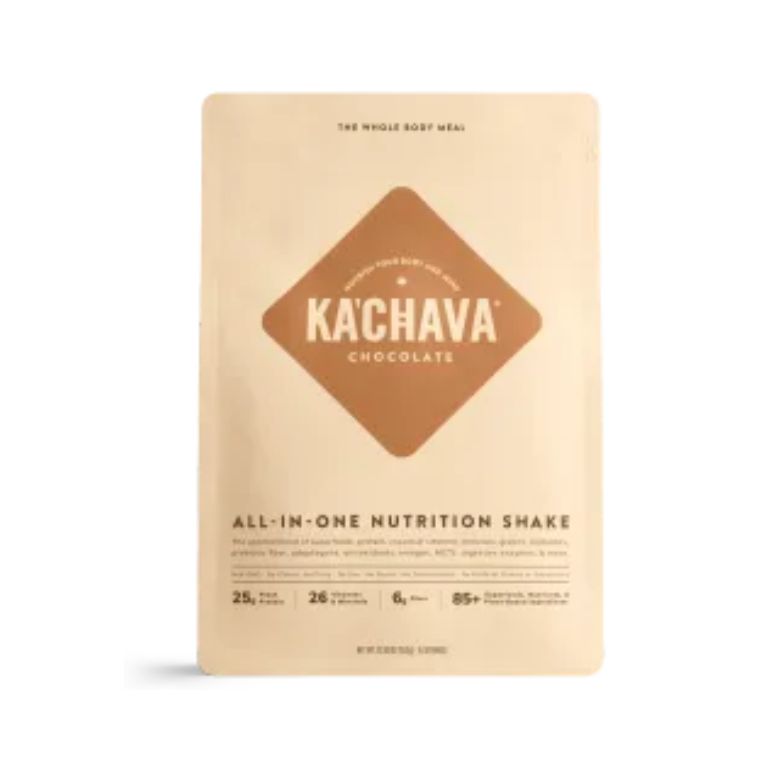
|
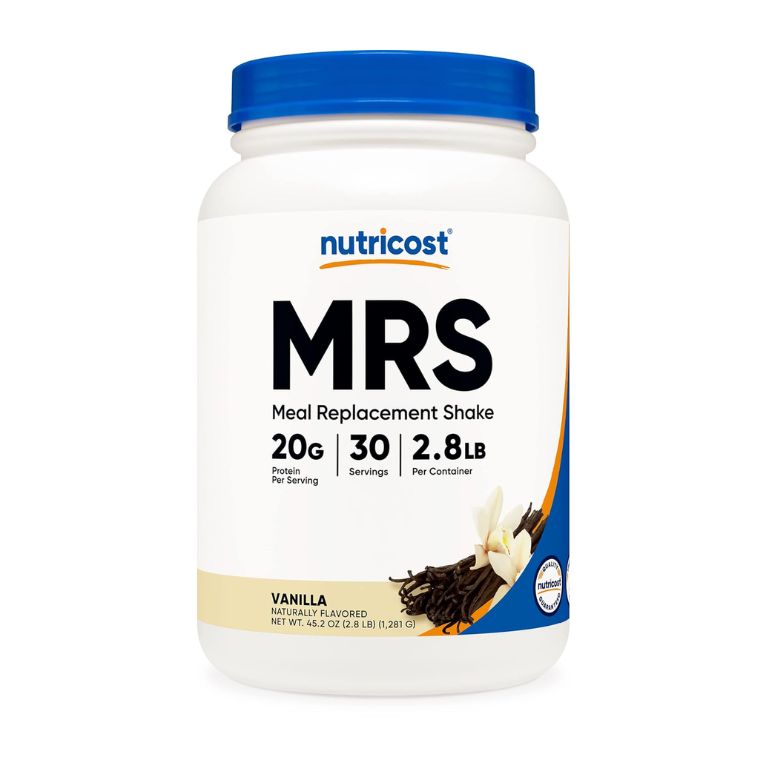
|
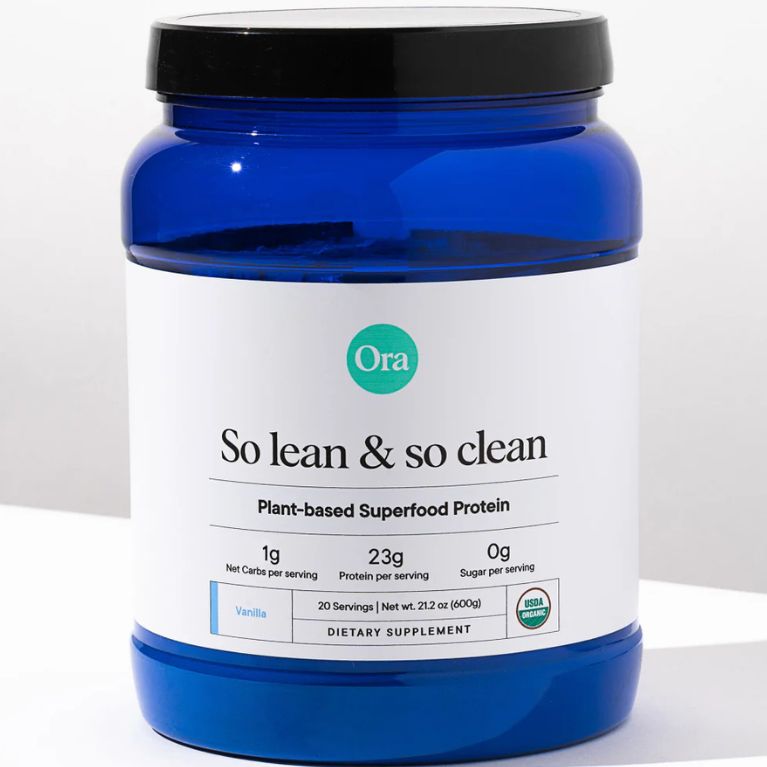
|
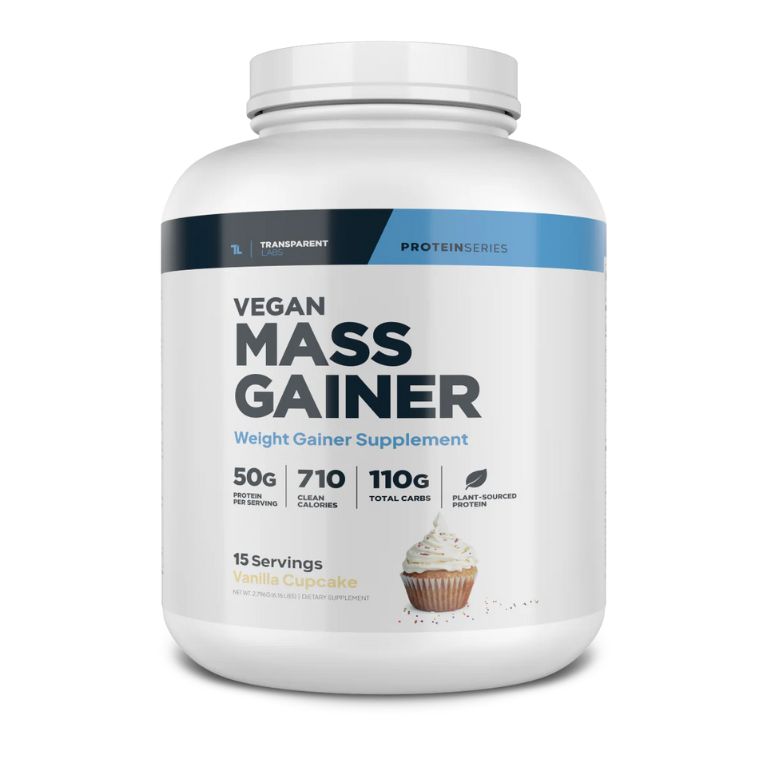
|
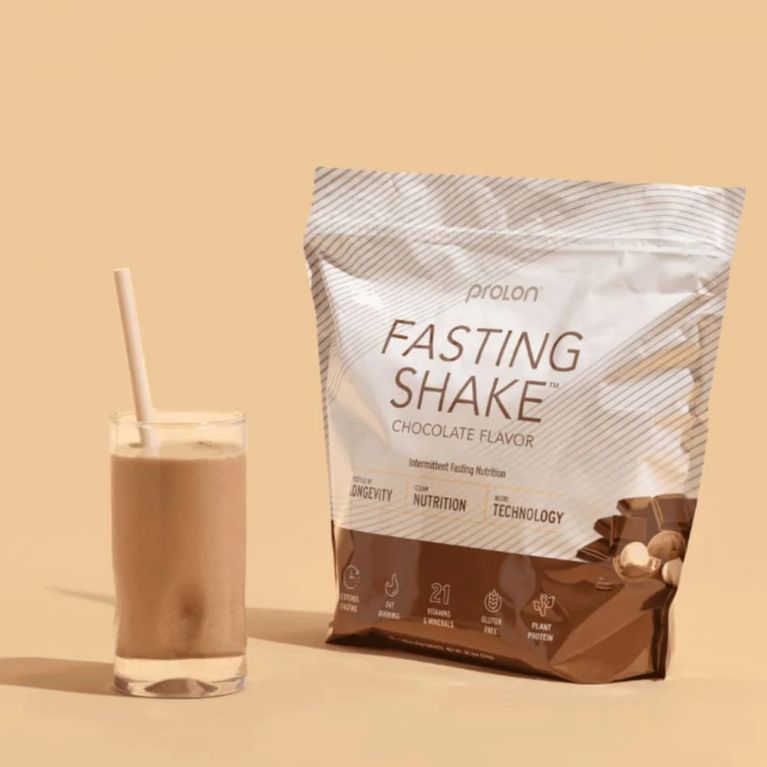
|
|
| Ka’Chava | Nutricost Meal Replacement Powder | Ora Organic So Lean So Clean | Transparent Labs Mass Gainer | Prolon Fasting Shake | |
| Rating | |||||
| Cost per serving | $4.67 | $1.50 | $2.50 | $5.33 | $5 |
| Protein per serving | 25 g | 20 g | 22-23 g | 51-53 g | $5 |
| Protein source | Yellow peas, organic rice, sacha inchi, amaranth, and quinoa | Whey protein | Organic pea protein, rice, sacha inchi, amaranth, and quinoa | Grass-fed whey | Almonds, macadamia nuts |
FAQs
What is Ka’Chava?
Ka’Chava is a meal replacement powder packed with over 85 plant-based ingredients, micronutrients, and superfoods. The shake offers a balanced mix of carbs, protein, fat, and fiber to promote satiety and help you feel fuller for longer.
Is Ka’Chava healthy?
Ka’Chava is a healthy option for people looking for a high-protein, low-calorie meal replacement shake. It supplies vitamins, minerals, omega-3s, and probiotics known to support overall health and wellness. Note, though, that Ka’Chava should be used to supplement a balanced diet and shouldn’t be relied upon for all your nutrition needs.
These statements have not been evaluated by the Food and Drug Administration. These products are not intended to diagnose, treat, cure, or prevent any diseases.
Our experts
Lauren Panoff, MPH, RD
Lauren Panoff, MPH, RD is a plant-based registered dietitian, freelance writer, and content strategist for health and nutrition brands. She completed her nutrition education at Colorado State University, her dietetic internship through Michigan Medicine, and holds a Master of Public Health degree from Michigan State University. Lauren has been working in the wellness industry for over 15 years, including time spent in project management, public health standards, dietary supplement testing, inpatient and outpatient nutrition therapy, and child education. She has followed a plant-based lifestyle for over a decade and is passionate about helping others enjoy a healthier and more meaningful life.
Joana Neziri, M.S., NASM CPT
Joana is a writer, editor, and content strategist focusing on nutrition, fitness, and all things health. After earning a master’s degree in business from the University of North Florida, she began a career in research and digital marketing.
Lily Moe, Editor
Lily is a Brooklyn-based writer and editor with over seven years of experience in health media. As a former Fitness Coach, Lily’s editorial prowess has largely focused on fitness, nutrition, and weight management. She has also spent a fair share of time in testing labs, analyzing everything from protein powders to yoga mats. Her work has appeared in Verywell Fit, Verywell Mind, Health, and more.
Kelly Uhler
Kelly has a multifaceted background in elder care, health care, and copywriting. She has worked for organizations such as A Place For Mom and Homecare.com, which gave her the opportunity to work closely with families, providing reliable information to help them make informed decisions about their loved one’s health, safety, and quality of life.

Lindsey DeSoto, RDN, LD
Fortune Recommends Nutrition Writer
About Author
Lindsey DeSoto is an experienced registered dietitian who enjoys staying up to date on the latest research and sharing her knowledge through writing. Her writing and expertise have been featured in various publications, including Verywell Health, Medical News Today, Health, and CNBC.
She specializes in healthy aging, weight loss, chronic kidney disease management, and general health and wellness. DeSoto holds a Bachelor of Science degree in Food and Nutrition from the University of Alabama, as well as a Bachelor of Science degree in Business Management from the University of Southern Mississippi. Outside of healthcare, Lindsey enjoys spending time with her husband and two children, working out, and attending sporting events.
Sources
- Łuszczki E, Boakye F, Zielińska M, et al. Vegan diet: nutritional components, implementation, and effects on adults’ health [published correction appears in Front Nutr. 2024 Jan 05;10:1354336. doi: 10.3389/fnut.2023.1354336]. Front Nutr. 2023;10:1294497. https://doi.org/10.3389/fnut.2023.1294497
- Astbury NM, Piernas C, Hartmann-Boyce J, Lapworth S, Aveyard P, Jebb SA. A systematic review and meta-analysis of the effectiveness of meal replacements for weight loss. Obes Rev. 2019;20(4):569-587. https://doi.org/10.1111/obr.12816
- Ioniță-Mîndrican CB, Ziani K, Mititelu M, et al. Therapeutic Benefits and Dietary Restrictions of Fiber Intake: A State of the Art Review. Nutrients. 2022;14(13):2641. https://doi.org/10.3390/nu14132641
- American College of Allergy, Asthma, and Immunology. Tree nut.
- NSF. Ka’Chava superfood, chocolate.
- NSF. What our mark means.
- Lonnie M, Hooker E, Brunstrom JM, et al. Protein for Life: Review of Optimal Protein Intake, Sustainable Dietary Sources and the Effect on Appetite in Ageing Adults. Nutrients. 2018;10(3):360. https://doi.org/10.3389/fnut.2023.1294497
- U.S. Food and Drug Administration. Interactive nutrition facts label: Protein.
- MedlinePlus. Dietary fiber.
- The Academy of Nutrition and Dietetics. Easy ways to boost fiber in your diet.
- American Heart Association. Know the flax (and the chia): A little seed may be what your diet needs.
- National Cancer Institute. Antioxidants and cancer prevention.
- Saraiva A, Carrascosa C, Ramos F, Raheem D, Lopes M, Raposo A. Coconut Sugar: Chemical Analysis and Nutritional Profile; Health Impacts; Safety and Quality Control; Food Industry Applications. Int J Environ Res Public Health. 2023;20(4):3671. https://doi.org/10.3390/ijerph20043671
- Centers for Disease Control and Prevention. Get the facts: Added sugars.
- Chugh RM, Mittal P, Mp N, et al. Fungal Mushrooms: A Natural Compound With Therapeutic Applications. Front Pharmacol. 2022;13:925387. https://doi.org/10.3389/fphar.2022.925387
- Panossian AG, Efferth T, Shikov AN, et al. Evolution of the adaptogenic concept from traditional use to medical systems: Pharmacology of stress- and aging-related diseases. Med Res Rev. 2021;41(1):630-703. https://doi.org/10.1002/med.21743
- Mathipa-Mdakane MG, Thantsha MS. Lacticaseibacillus rhamnosus: A Suitable Candidate for the Construction of Novel Bioengineered Probiotic Strains for Targeted Pathogen Control. Foods. 2022;11(6):785. https://doi.org/10.3390/foods11060785
- MedlinePlus. Lactobacillus acidophilus.
- National Institutes of Health: Office of Dietary Supplements. Probiotics.
- National Institute of Diabetes and Digestive and Kidney Diseases. Your digestive system and how it works.
- MedlinePlus. Pancreatitis.
- MedlinePlus. Fiber.
- Monash University. Update. Label reading and FODMAPS.
- National Kidney Foundation. Potassium in your CKD diet.
- National Kidney Foundation. Vitamins and minerals in chronic kidney disease.
